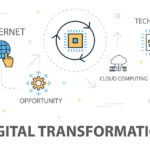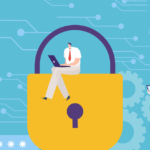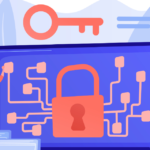The role of the Chief Information Security Officer (CISO) in enterprises has evolved in the recent times. The pandemic, remote working culture and increase in cloud adoption have contributed to the growing importance of the CISO’s function in an organization. Data breaches fueled by increase in Digital Transformation across industries are proving to be costly to remediate and adversely impacting brand reputation too. Security and integrity of the IT network and infrastructure, data and applications present both on premise and cloud, by leveraging new-age technology, is the responsibility of CISOs. They have to build and implement a robust cybersecurity strategy and ensure business continuity.
Furthermore, with businesses striving to succeed in the new-normal, the pace of Digital Transformation is getting accelerated like never before. This was first evident when organizations scrambled to facilitate remote working, retailers shifting to online selling, healthcare institutions offering tele-medicine, online classes at educational institutions, growth in online banking and more. The rush to ensure business continuity with adopting digital tools, cyber-security function was overlooked, providing a reason for cyber-criminals and hackers to celebrate.
As the complexity in digital infrastructure increases, so are the frequency and sophistication of cyber-attacks leading to losses on all fronts of the business. Vulnerabilities and security weaknesses are getting introduced into the system that can be easily exploited by cyber criminals. Other threats such as DDoS attacks, phishing, ransomware and infiltrations of IoT devices are further causing distress to cyber-security teams. To address such challenges, cyber-security should be weaved into the designing and building of the Digital Transformation strategy and not be treated as an afterthought only. Today, organizations have begun to acknowledge the need for establishing a robust cyber-security strategy and its successful implementation and are making it a part of their Digital Transformation exercise.
Cybersecurity to Drive Critical Business Decisions
Business objectives are dependent on business markets, which in turn rely on IT solutions and technology. Protecting data and sensitive information is a business driver rather than just remaining a best practice, today. Any cyber-attack and data loss will have an adverse impact on businesses. So cyber security has to be built into vendor activities, operation processes and customer relationships.
It is important for organizations to ensure a robust asset management practice and resilience against cyber threats and create business value by staying ahead of the cyber-threat management curve. As organizations are no longer limited to the four walls, an integrated approach to cyber security that covers IT assets, both on premise and cloud is imperative.
Implementation is Equally Critical as the Strategy
Having a robust cyber-security strategy in place is actually half job done, without an effective implementation. A team with strong execution capabilities is equally important to successfully protect businesses against cyber-attacks. Traditionally CISO and team would ensure reduction in potential risks by protection the organization on cyber threats and this business unit would work in silo. Today the focus in shifting with digital transformation, where the security team is an integral part of the main stream and plays a more strategic role. Security should support new initiatives and project development, driving solutions to market in short time frames.
Digital transformation is no doubt bringing a paradigm shift in business operations and changing cyber-security requirements. With the pandemic introducing newer levels of risks, cyber-security teams have to leverage both proactive and reactive measures to ensure business continuity and enjoy the competitive advantage. Protection of businesses and assets from malicious threats should include, ongoing integration and automation of cyber security measures to address the fast-evolving threat landscape.




